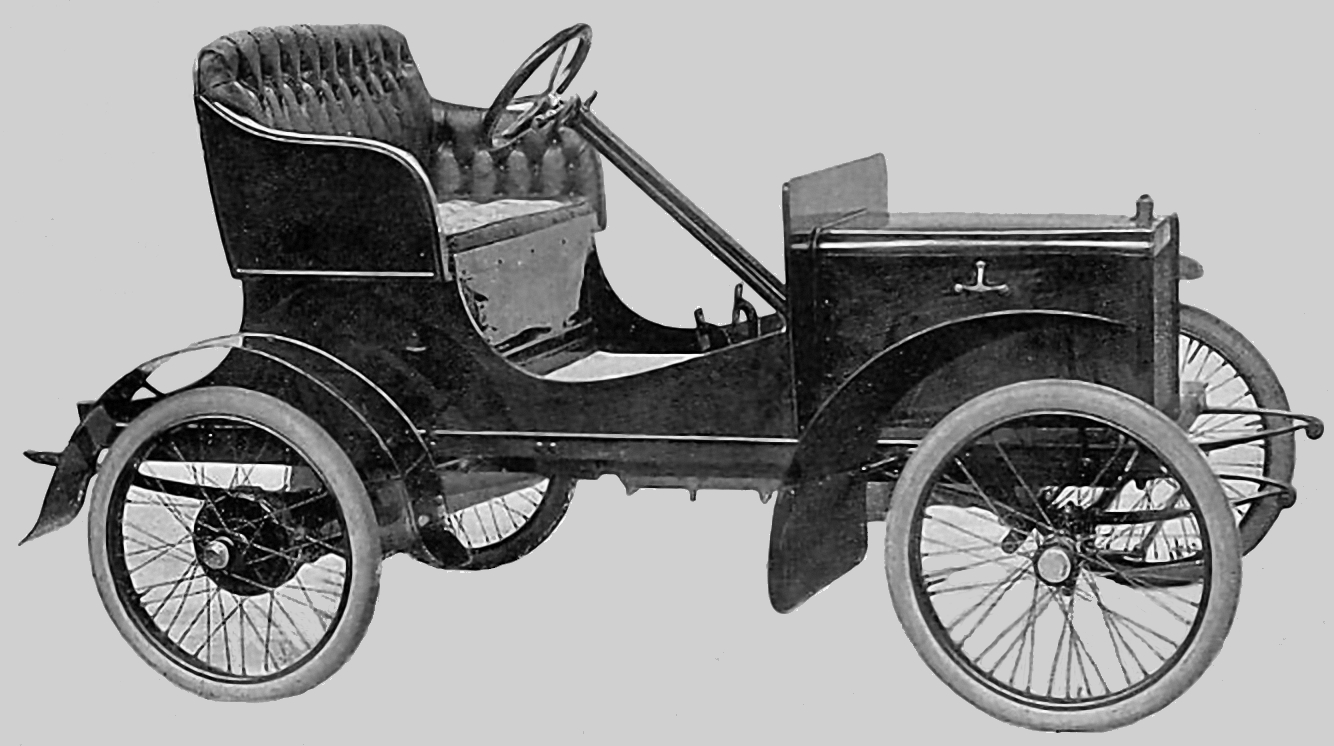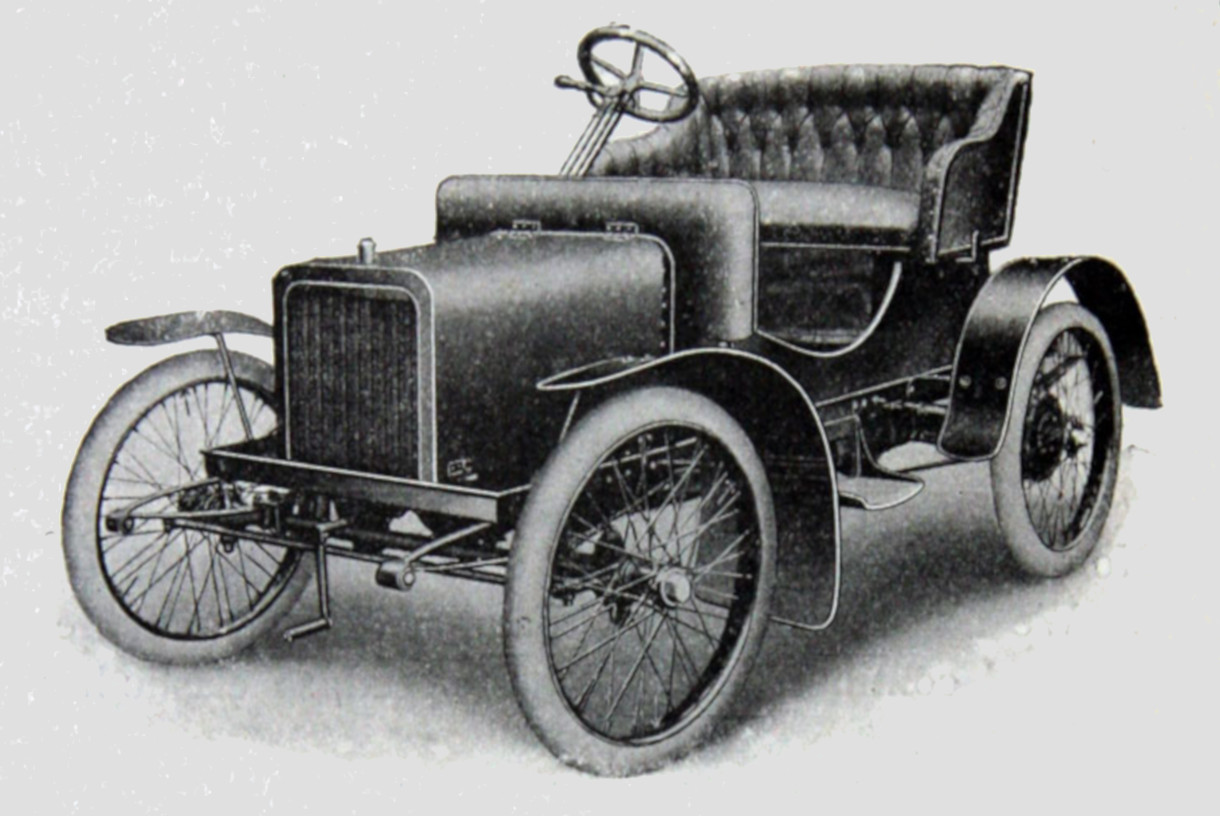
ROVER 6hp
The Inexpensive Second Car
1905 - 1912
The image shows the open ROVER 6hp Two-Seater, model year 1905 - image taken from the ROVER brochure for 1905.
The ROVER 6 hp is officially presented at the Birmingham Motor Show in January 1905. It quickly turns out that Lewis developed a simpler, less technically complex car than the previous 8 hp.
The small car is immediately very popular, as it has some advantages - especially the relatively low price.
ROVER advertises the car in his catalogue for 1905 as follows:
 The car has been specially designed for those requiring a well-made, serviceable vehicle, at a moderate figure, and will be found to be remarkable value. There is nothing cheap about it but the price, and it is only by producing in large quantities that we are able to offer such a bargain.
The car has been specially designed for those requiring a well-made, serviceable vehicle, at a moderate figure, and will be found to be remarkable value. There is nothing cheap about it but the price, and it is only by producing in large quantities that we are able to offer such a bargain.
The engine and the whole og the working parts are exceedingly well protected, though easily accessible, a feature which will be appreciated by all motorists."
The rear axle is supported against the chassis by two semi-elliptical springs and thus offers better suspension comfort than the 8 hp.
In addition, it is affordable for a larger group of people. Of course it is not a "people's car" yet, that did not exist at that time. Nevertheless, it is often called the "100 Guinea Car". (1 Guinea = 1 £ 1 Shilling). In the course of the years the equipment is improved, thus also the price rises - the simple model with spoke wheels remains however further in the offer, is hardly promoted however still.
The ROVER 6 hp is initially regarded as a "cycle car" thanks to its narrow spoke wheels. Later, it will be equipped - initially as an option - with so-called "artillery wheels" made of wood. Many customers, however, still insist on spoke wheels - in the Gazettes there are fierce arguments about the advantages and disadvantages of different wheel types.
A few technical features should be mentioned. The chassis is made of wood with sheet metal reinforcements. The engine housing with the engine mounts, the clutch housing and the gearbox housing is cast out of one piece of aluminium, it reaches almost up to the rear axle. The castings have horizontal joints that allow access to the interior. The rest up to the rear axle is bridged by a small cardan shaft which is taken over from the 8 hp.
The car is equipped with external shoe brakes. The front spring bearings protrude beyond the front wheels. Driver and passenger sit high on the chassis. Instead of a long footboard between the mudguards, there are three small steps. For the luggage there is a simple container with lid behind the seats.
After participating in a road race in Bexhill-on-Sea even before the start of production, the car sells immediately well. Up to 20 cars are sold per week.The engine and the whole og the working parts are exceedingly well protected, though easily accessible, a feature which will be appreciated by all motorists.
| Sources | |
|---|---|
 |
1905 Rover Cars - Second Edition Sole Manufacturer: The Rover Cycle Co., Ltd., Meteor Works, Coventry Contains also the Rover 8hp |
 |
1907 Rover Cars - Aut Optimum Aut Nihil - The Best or Nothing. The Rover Co., Ltd., Meteor Works, Coventry Contains also the Rover 8hp and 16-20hp |
 |
1910 Rover Brochure 6hp - 8hp- 12hp - 15hp - 20hp |
 |
Rover Enthusiast Magazine James Taylor March 2007 |
Already 1906 some changes are clearly recognizable: separation bulkhead, seat, step for easier entrance.
The picture comes from a report in 'The Motor' from 1906.

© 2021-2026 by ROVER - Passion / Michael-Peter Börsig

 Deutsch
Deutsch